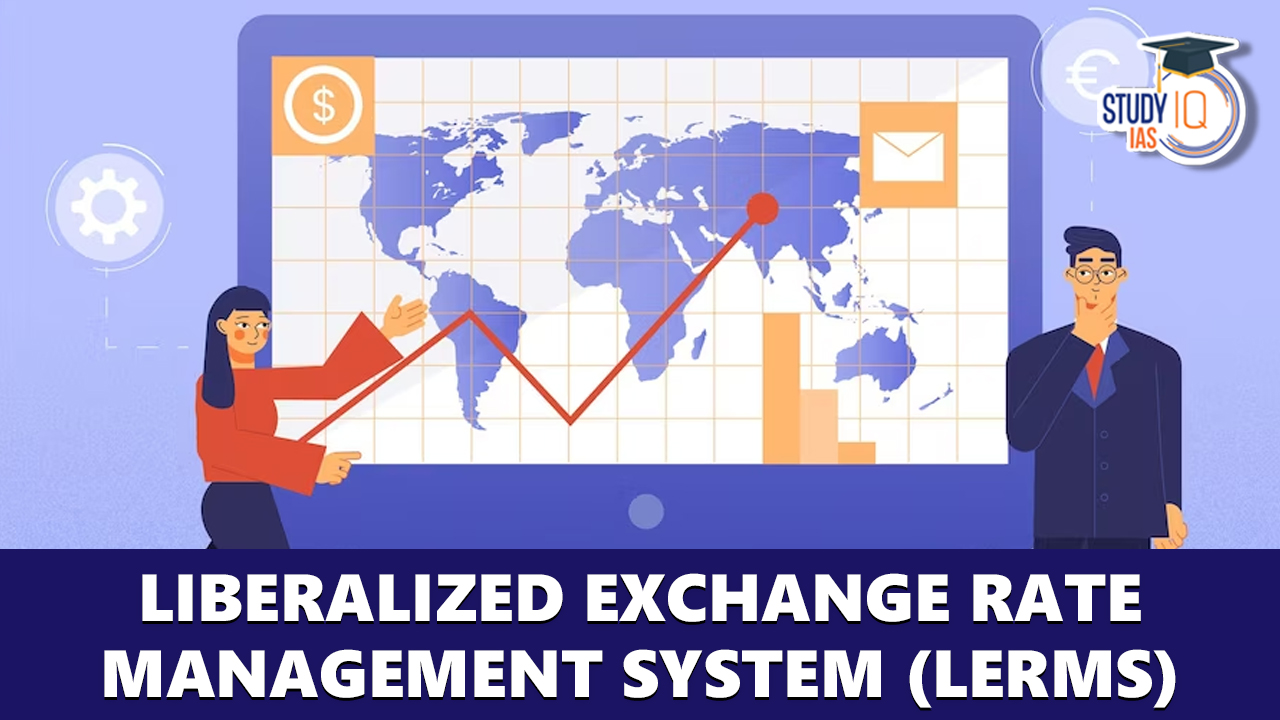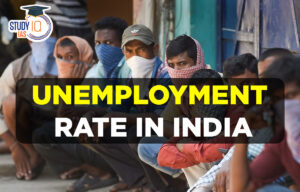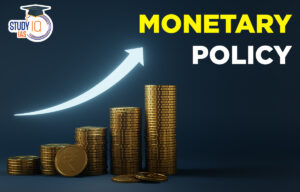Table of Contents
Liberalized Exchange Rate Management System (LERMS)
In an increasingly interconnected global economy, the management of exchange rates plays a crucial role in shaping a nation’s economic landscape. The traditional approach of fixed exchange rates has gradually given way to a more dynamic and flexible system known as the liberalized exchange rate management system. This paradigm shift reflects the recognition that in today’s complex and interdependent world, a rigid exchange rate regime may pose limitations and hinder a country’s ability to adapt and respond to changing economic conditions.
By embracing a liberalized exchange rate management system, nations aim to strike a delicate balance between stability and flexibility, fostering an environment conducive to economic growth, competitiveness, and integration into the global marketplace. In this article, we will delve into the nuances of the liberalized exchange rate management system, its benefits, challenges, and the experiences of various countries in navigating this evolving terrain.
Read about: Concept of GDP, GNP, NNP and NDP
What is Liberalized Exchange Rate Management System?
The Liberalized Exchange Rate Management System refers to a flexible and market-driven approach to managing a country’s exchange rate. Unlike fixed exchange rate systems, where the value of the currency is pegged to a specific foreign currency or a fixed rate, a liberalized exchange rate allows the currency’s value to be determined by market forces, primarily through supply and demand dynamics.
Under a liberalized exchange rate management system, the central bank or monetary authority of a country intervenes in the foreign exchange market to maintain stability and prevent excessive volatility. However, the exchange rate is primarily determined by market mechanisms, such as the inflow and outflow of capital, trade imbalances, and investor sentiment.
Read about: Economic Liberalization in India
Features of LERMS
The Liberalized Exchange Rate Management System (LERMS) was a specific exchange rate regime implemented in India between 1992 and 1993. LERMS introduced partial convertibility of the Indian rupee and aimed to liberalize and reform the country’s foreign exchange system. Some of the key features of LERMS were:
Dual Exchange Rate System
LERMS established a dual exchange rate system in India. It consisted of two exchange rates: the official exchange rate determined by the Reserve Bank of India (RBI) and the market-determined exchange rate known as the “interbank rate” or “market rate.” The market rate was based on supply and demand dynamics in the foreign exchange market.
Current Account Convertibility
LERMS allowed for greater convertibility of the Indian rupee on the current account. Current account transactions, such as trade in goods and services, were subject to market-determined exchange rates under the interbank rate system. This move aimed to promote international trade and improve India’s balance of payments position.
Capital Account Restrictions
While LERMS introduced greater flexibility on the current account, it retained restrictions on the capital account. Capital account transactions, including foreign direct investment (FDI) and portfolio investment, still faced regulations and controls from the Indian government. This was done to manage the flow of capital and prevent abrupt movements that could disrupt the economy.
Managed Float
LERMS adopted a managed floating exchange rate system. While the market played a significant role in determining the exchange rate, the RBI intervened in the foreign exchange market to stabilize and smoothen excessive fluctuations. The central bank aimed to strike a balance between allowing market forces to influence the exchange rate and maintaining stability.
Liberalization of Trade and Investment
LERMS was implemented alongside broader economic reforms aimed at liberalizing trade and attracting foreign investment. The dismantling of trade barriers, reduction in import restrictions, and the simplification of export and import procedures complemented the exchange rate reforms under LERMS. This integration aimed to enhance India’s participation in the global economy.
Read about: LPG Reforms in India
Modified Liberalized Exchange Rate Management System
Modified LERMS, also known as M-LERMS, refers to the revised version of the Liberalized Exchange Rate Management System (LERMS) implemented in India. It was introduced in 1993 as an extension of the original LERMS framework.
M-LERMS was designed to further liberalize India’s foreign exchange system and promote market-driven exchange rate mechanisms. It aimed to facilitate greater convertibility of the Indian rupee and enhance India’s integration into the global economy. Some key features of M-LERMS were as follows:
Unified Exchange Rate
Under M-LERMS, the dual exchange rate system of LERMS was unified. The official exchange rate and the market-determined interbank rate were merged into a single exchange rate. This consolidation aimed to streamline the exchange rate mechanism and reduce administrative complexities.
Greater Market Determination
M-LERMS emphasized a greater role for market forces in determining the exchange rate. The exchange rate was primarily influenced by supply and demand dynamics in the foreign exchange market, reflecting the relative strength of the Indian rupee against other currencies.
Managed Float with Intervention
While M-LERMS aimed to promote market determination, it allowed for occasional intervention by the Reserve Bank of India (RBI) to manage excessive volatility and maintain stability. The central bank would step in through direct market operations or other measures to smoothen any abrupt fluctuations.
Gradual Capital Account Liberalization
M-LERMS continued to retain some restrictions on the capital account, although there were gradual steps towards liberalization. The government implemented measures to relax foreign investment regulations, simplify procedures, and attract more capital inflows.
External Sector Reforms
Alongside M-LERMS, broader economic reforms were implemented to liberalize India’s external sector. Policies related to trade, foreign investment, and foreign exchange regulations were revisited to facilitate greater integration with the global economy.
Read about: NRI Deposits
Evolution of Exchange Rate Management in India
The evolution of exchange rate management in India has witnessed several significant shifts and reforms over the years. Here is a brief overview of the key stages and changes in India’s exchange rate regime:
Pre-Independence Era
Before India gained independence in 1947, the exchange rate was primarily fixed to the British pound under British colonial rule. The Indian rupee was pegged at a fixed rate against the pound sterling.
Fixed Exchange Rate (1947-1971)
Following independence, India maintained a fixed exchange rate regime, initially pegging the Indian rupee to the pound sterling and later to the U.S. dollar after the devaluation of the pound in 1966. The exchange rate was managed by the Reserve Bank of India (RBI), and the rupee’s value was maintained within a specified range against the dollar.
Managed Float (1971-1992)
In 1971, India faced a severe balance of payments crisis, leading to a shift from a fixed exchange rate to a managed float system. The Indian rupee was allowed to fluctuate within a controlled range determined by the RBI. This period witnessed periodic adjustments and devaluations to manage external imbalances.
Liberalized Exchange Rate Management System (LERMS) (1992-1993)
LERMS was introduced in 1992 as a partial convertibility regime. It established a dual exchange rate system, with a market-determined interbank rate alongside an official exchange rate set by the RBI. The move aimed to liberalize India’s foreign exchange system, promote trade, and attract foreign investment.
Modified LERMS (M-LERMS) (1993-1994)
M-LERMS was introduced as an extension of LERMS in 1993. It merged the dual exchange rate system into a unified exchange rate, giving greater prominence to market determination. M-LERMS aimed to enhance market-driven exchange rate mechanisms while allowing occasional central bank intervention.
Liberalization and Floating Exchange Rate (1994-present)
In March 1994, India adopted a floating exchange rate regime. The rupee’s value is now predominantly determined by market forces, with the RBI intervening to manage excessive volatility. Over the years, India has implemented various reforms to liberalize the capital account, simplify foreign exchange regulations, and promote foreign investment.
Read about: SEBI
Exchange Rate and its types
An exchange rate is the value at which one currency can be exchanged for another currency. Here is a table that gives a description of different types of exchange rates.
| Exchange Rate Type | Description |
| Fixed Exchange Rate | The value of a currency is fixed or pegged to a specific foreign currency, a basket of currencies, or a commodity. |
| Floating Exchange Rate | The value of a currency is determined by market forces, primarily supply and demand in the foreign exchange market. |
| Managed Float | The exchange rate is primarily determined by market forces but with occasional intervention by the central bank to manage excessive volatility. |
| Crawling Peg | The exchange rate is adjusted periodically in small increments, either based on a fixed formula or at the discretion of the central bank. |
| Currency Board | The exchange rate is fixed, and the central bank holds reserves in a foreign currency in a 1:1 ratio to ensure convertibility at the fixed rate. |
| Cross Rate | The exchange rate between two currencies is derived from their respective exchange rates against a third currency. |
| Nominal Exchange Rate | The rate at which one currency can be exchanged for another currency, without considering the relative purchasing power of the currencies. |
| Real Exchange Rate | The rate at which one country’s goods and services can be exchanged for another country’s goods and services, adjusted for inflation. |
| Spot Exchange Rate | The exchange rate for immediate delivery and settlement of currencies is typically within two business days. |
| Forward Exchange Rate | The exchange rate agreed upon today for the delivery and settlement of currencies at a future specified date. |
Read about: Gross Value Added
Liberalized Exchange Rate Management System (LERMS) UPSC
The Liberalized Exchange Rate Management System (LERMS) is an important topic for UPSC (Union Public Service Commission) preparation, as it falls under the economics and international relations sections of the UPSC Syllabus. It is crucial to grasp the features, implications, and evolution of LERMS, as it demonstrates the country’s efforts towards economic liberalization, global integration, and the management of exchange rates. Aspirants can opt for UPSC Online Coaching and take UPSC Mock Test to have a firm grasp of such topics.
Read about: FRBM Act


 Purchasing Power Parity Index, How to Ca...
Purchasing Power Parity Index, How to Ca...
 Unemployment Rate in India, Current Rate...
Unemployment Rate in India, Current Rate...
 RBI Monetary Policy Committee: Repo Rate...
RBI Monetary Policy Committee: Repo Rate...

























